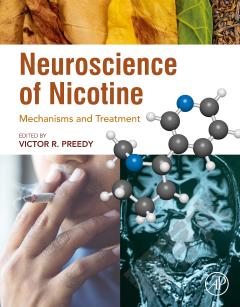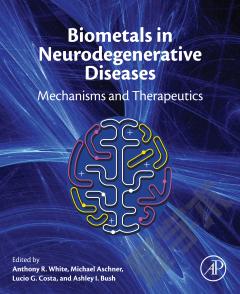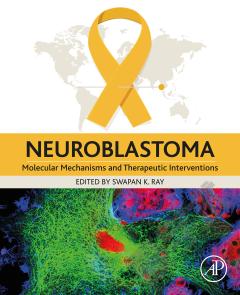Neuroprotection —— Models, Mechanisms and Therapies
----- 神经保护
Preface.List of Contributors.PART I: NEUROLOGICAL DISORDERS-EPIDEMIOLOGY, CLINICAL OVERVIEW, AND MODEL SYSTEMS.1. Stroke (Andreas Meisel, Konstantin Prass, Tilo Wolf, Ulrich Dirnagl).Abstract.1.1 Introduction.1.2 The Penumbra Concept.1.3 Excitotoxicity.1.4 Oxygen Free Radicals.1.5 Tissue Acidosis.1.6 Peri-infarct Depolarizations.1.7 Inflammation.1.8 Damage to the Blood-Brain-Barrier.1.9 Programmed Cell Death and Apoptosis.1.10 Ischemia-induced DNA Damage, DNA Repair, and p53 as Genotoxic Sensor.1.11 Epigenetics.1.12 Gene Expression.1.13 Cell Replacement.1.14 Endogenous Neuroprotection - Ischemic Tolerance.1.15 Stroke Induced Immune Depression (SIDS).1.16 Conclusion.References.2. Parkinson's Disease (Marina Romero-Ramos, Matthew Maingay and Deniz Kirik).2.1 Epidemiology of Parkinson's Disease.2.2 Oxidative Stress In Parkinson's Disease.2.3 Role of Alpha-Synuclein in Parkinson's Disease.2.4 The Involvement of Proteosome in PD.2.5 Other Genes Involved in Familial Parkinson's Disease.2.6 Neurotoxic PD Models.2.7 Genetic Models of Parkinson's Disease.Acknowledgements.References.3. Amyotrophic Lateral Sclerosis (Georg Haase).3.1 Human Motor Neuron Diseases.3.2 Cell Culture Models of Motoneuron Degeneration.3.3 Animal Models of Motor Neuron Disease.3.4 Future Neuroprotective Approaches.3.5 Conclusion.References.4. Alzheimer's Disease and Other Neurodegenerative Diseases (Philipp J. Kahle and Christian Haass).Abstract.4.1 Introduction.4.2 Transgenic Invertebrates.4.3 Transgenic Mice.4.4 Viral Models.4.5 Conclusion and Outlook.References.5. CNS Inflammation (Christine Stadelmann and Wolfgang Bruck).5.1 Introduction.5.2 The Pathologic Characteristics of the MS Plaque.5.3 Axonal Pathology in MS.5.4 Neuronal Pathology in Multiple Sclerosis.5.5 Lessons from Animal Models.References.6. Neurotrauma (Ibolja Cernak, Paul M. Lea IV, Alan I. Faden).6.1 Introduction.6.2 In Vivo Models.6.3 In Vitro Models.6.4 Conclusion.References.7. Spinal Cord Injury (Poonam Verma and James W. Fawcett).7.1 Acute Neuroprotection (preventing neuronal death).7.2 Regeneration of Nerve Fiber Tracts (initiating growth following injury).7.3 Bridging Cysts and Scars and Cellular Replacement.7.4 Replacing Lost Neurons.7.5 Treating Demyelination.7.6 Enhancing Plasticity.7.7 Future Expectations.References.PART II: CELLULAR AND MOLECULAR MECHANISMS.8. Apoptosis and Necrosis (Laura Korhonen and Dan Lindholm).8.1 Introduction.8.2 Apoptosis versus Necrosis.8.3 Genetics of Apoptosis and the Proteins Involved.8.4 Cellular Mechanisms of Apoptosis.References.9. Inflammation (Harald Neumann).9.1 Introduction.9.2 Innate Immune Responses in the CNS.9.3 Dual Mechanism of Innate Immunity in the CNS.9.4 Antigen Presentation for Adaptive Immune Responses in the CNS.9.5 Regulation of Adaptive Immune Responses in the CNS.9.6 Immune Surveillance of the CNS by T Lymphocytes.9.7 Effector Mechanisms of Lymphocytes.Acknowledgement.References.10. Metabolic Dysfunctions (Konstantin-A. Hossmann).10.1 Introduction.10.2 Disturbances of the Energy Metabolism.10.3 Disturbances of Flow-coupling.10.4 Mitochondrial Dysfunction.10.5 Importance of Disturbed Energy Metabolism for Injury Evolution.10.6 Disturbances of Protein Synthesis.10.7 Importance of Disturbed Protein Synthesis on Injury Evolution.10.8 Therapeutical Implications.References.11. Protein Misfolding (Milene Russelakis-Carneiro, Claudio Hetz, Joaquin Castilla and Claudio Soto).Abstract.11.1 Introduction.11.2 Disease Propagation by Replication of Prion Protein Misfolding.11.3 Prion Biology.11.4 Prion Pathogenesis.11.5 Neuronal Targeting.11.6 Neuronal Apoptosis in Prion Diseases.11.7 ER-Stress and Apoptosis in Prion Diseases.11.8 Concluding Remarks.References.12. Axonal Growth Inhibition (Anne D. Zurn and Christine E. Bandtlow).12.1 Introduction.12.2 Intrinsic Properties of CNS Neurons.12.3 Extrinsic Factors: The CNS as A Non-conducive Growth Environment.12.4 Experimental Strategies to Overcome Growth Inhibition.12.5 Conclusion.References.13. Neurogenesis (Sebastian Jessberger and Gerd Kempermann).13.1 Introduction.13.2 Neural Stem- and Precursor Cells in the Adult Brain.13.3 Maturation and Migration of Adult-generated Neurons in the Adult Brain.13.4 Neurogenesis in the Adult Brain - Age Dependency, Persistence and Genetic Determinants.13.5 Regulation of Adult Neurogenesis.13.6 Possible Functional Relevance of Neurogenesis in the Adult Brain.13.7 Therapeutic Strategies for Neural Cell Replacement.Acknowledgements.References.14. Excitotoxicity (Stuart A. Lipton, MD, PhD).Abstract.14.1 Introduction.14.2 The Search for Clinically-Tolerated NMDA Receptor Antagonists.14.3 Excitotoxicity.14.4 Memantine.14.5 NitroMemantines.14.6 Summary.Acknowledgments.Appendix.References.PART III: THERAPIES.15. Spinal Cord Trauma (V. Dietz).Abstract.15.1 Epidemiology.15.2 Clinical Aspects.15.3 Principles of Therapy.15.4 Current Approaches in Motor Rehabilitation.15.5 Search for Reliable Clinical Assessment.15.6 Conclusion.References.16. Neurodegeneration (Jorg B. Schulz, MD).16.1 What Is Neuroprotection?16.2 Outcome Measures in Clinical Studies.16.3 Specific Diseases.16.4 Why Do So Many Clinical Studies Fail? What Do We Need?References.17. Perspectives for Neuroprotective Therapies in Basic Research and Clinical Application (Mathias Bahr and Pawel Kermer).References.Index.
{{comment.content}}








 京公网安备 11010802027623号
京公网安备 11010802027623号